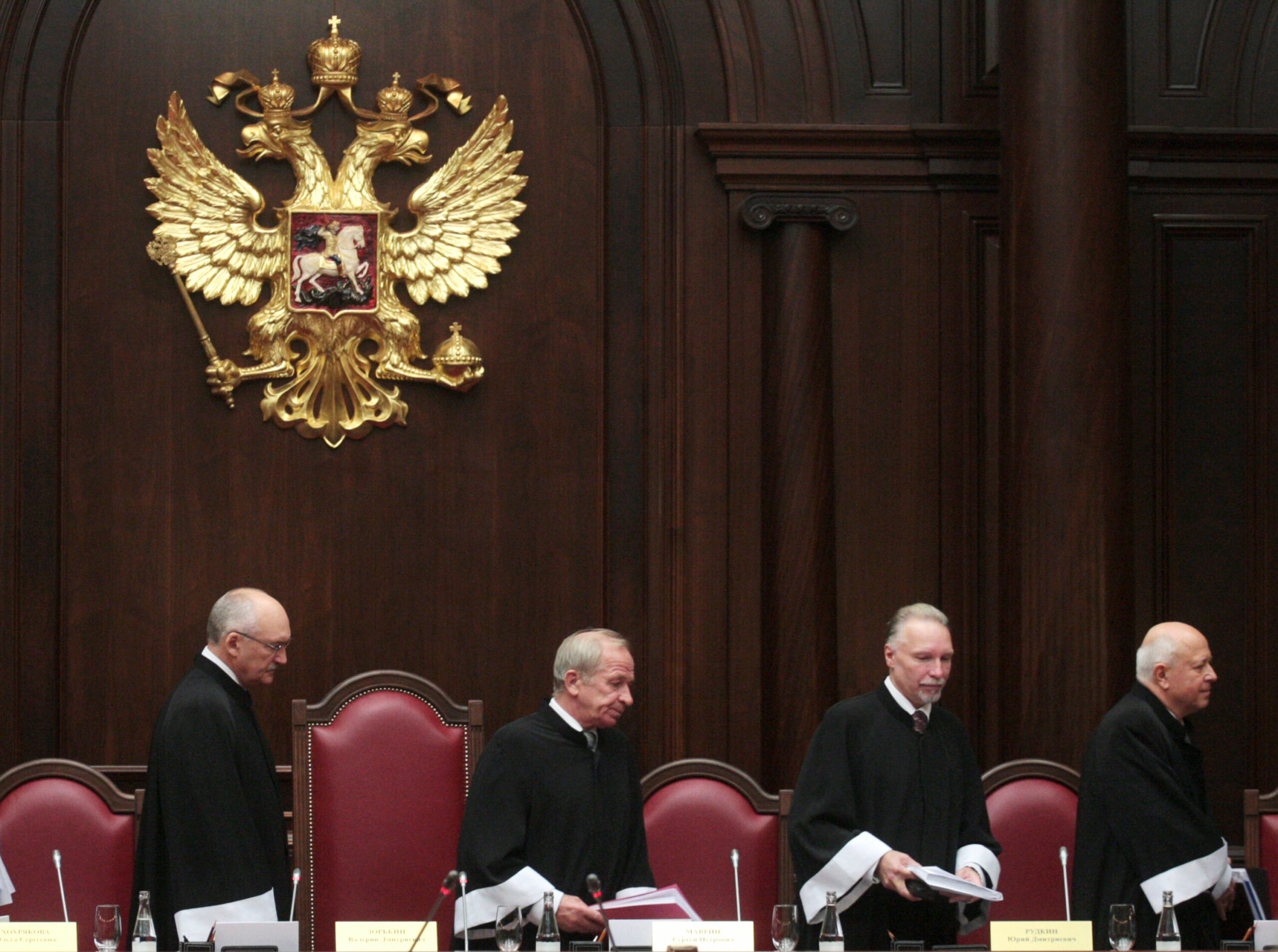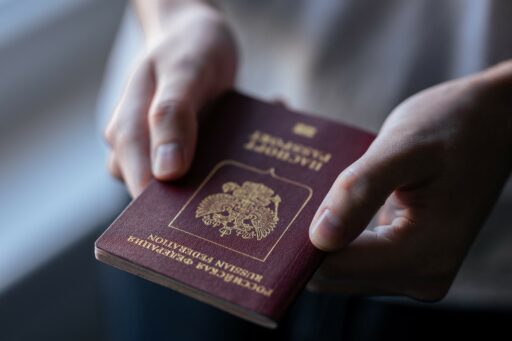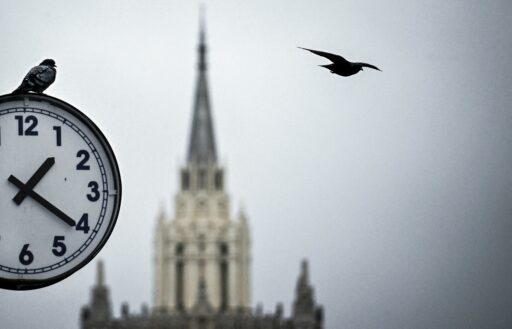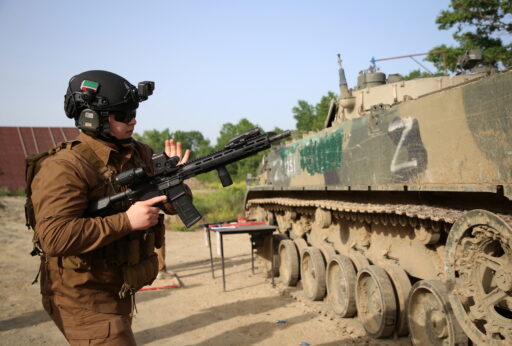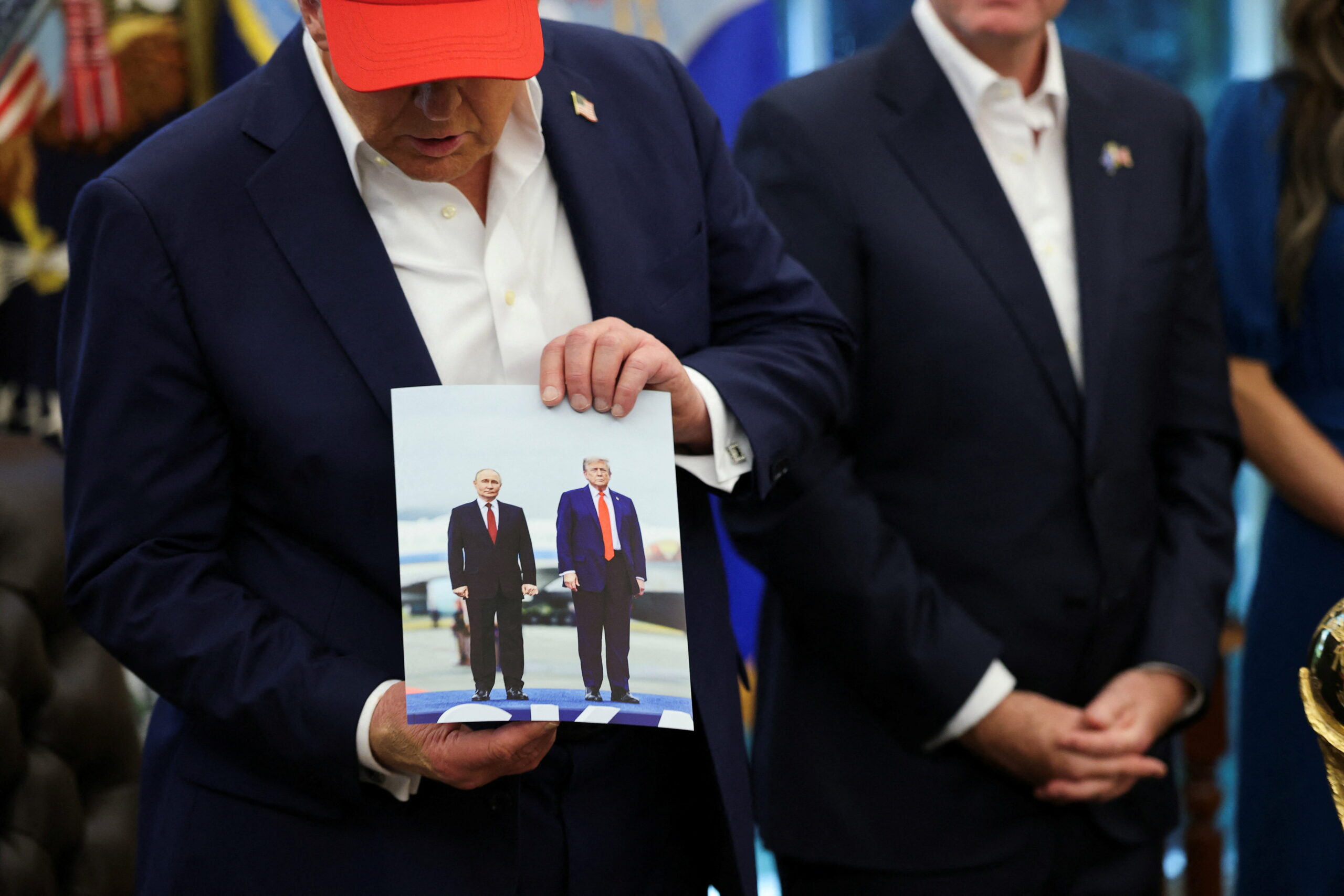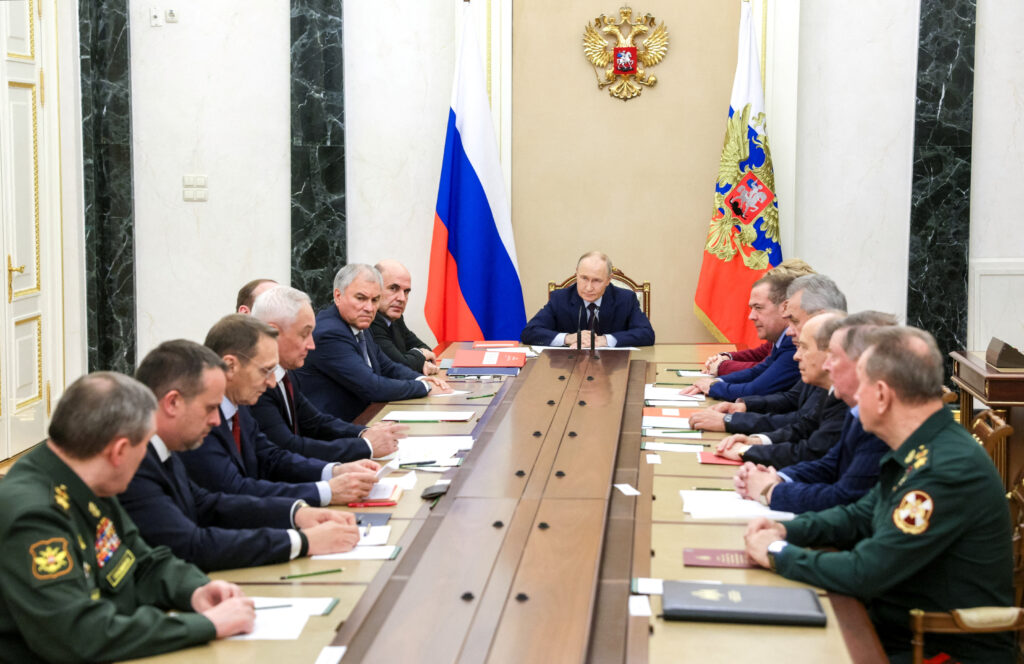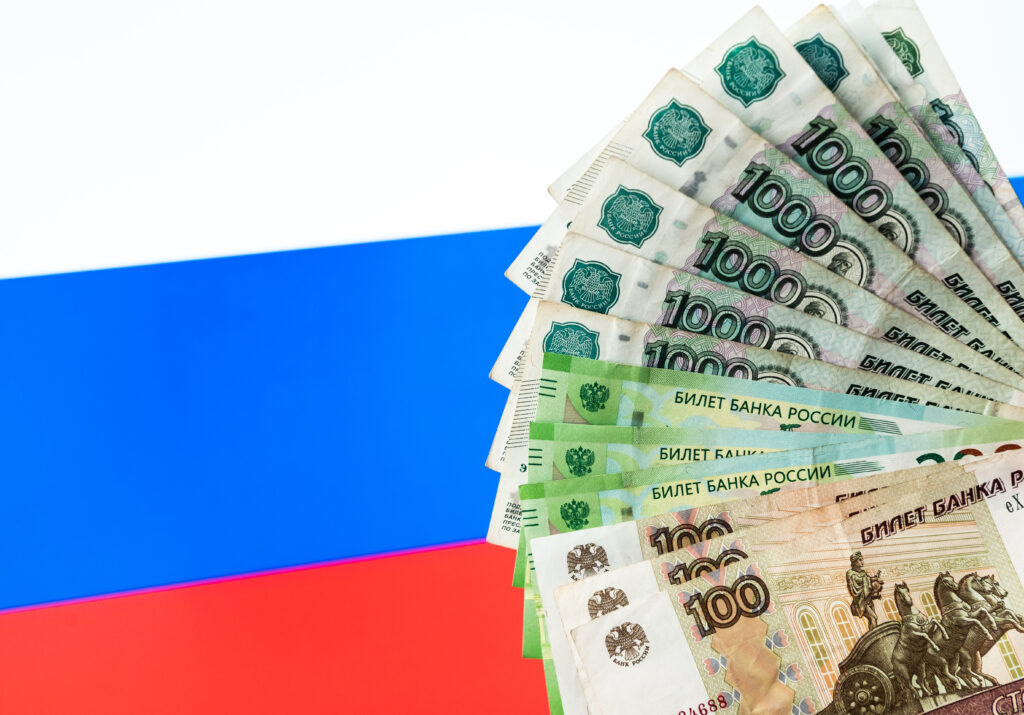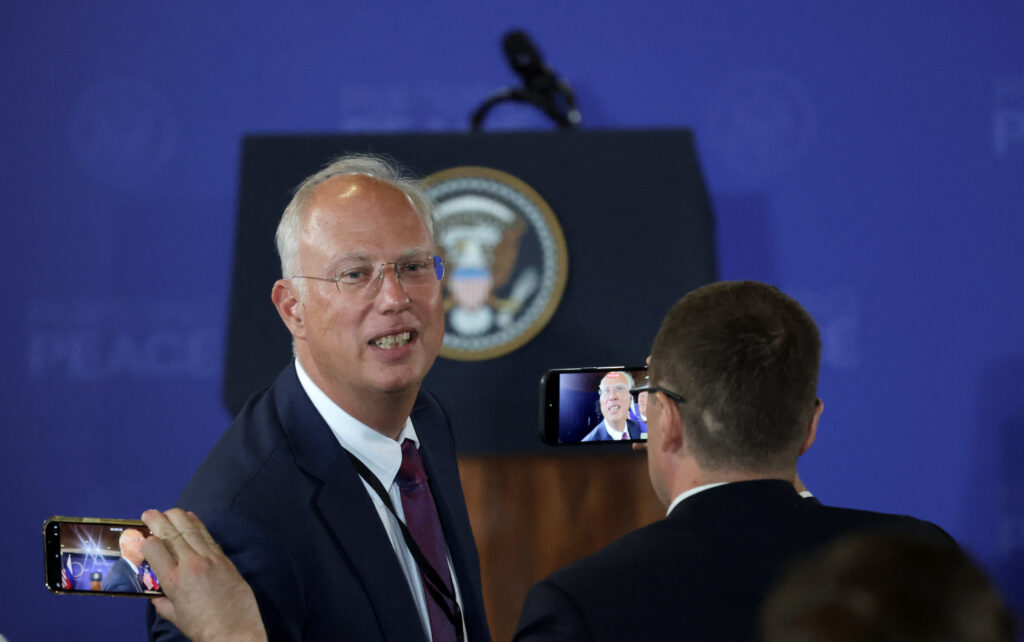When the Russian opposition considers how to help their nation emerge from the authoritarianism of Putin, the past offers plenty of lessons for where mistakes were made —but there are also instructive moments where previous attempts at reform proved successful. Today the Russian Constitutional Court is regarded as a bit of a joke. Its chairman Valery Zorkin is referred to by legal scholars as ‘the zombie jurist‘. Like most other aspects of the modern Russian state, the court exists not to enact its stated function — enforcing the Constitution of Russia — but to rubber stamp the decisions of the executive. It was not always thus; yet the history of the Court has largely been obscured from memory due to the cavalcade of events that surrounded it. Should Russia’s new generation of liberals and reformers wish to, they can look to the Constitutional Court of 1991−1998 as an example of how reforms in Russia can actually work, and work well.
Success and Failure
The Constitutional Court of Russia was established in 1991 to ensure the alignment of laws and presidential decrees with the Russian Constitution. Its creation was a lengthy affair, driven by a subset of Russian reformers who had a legalistic outlook. They felt if they could create a Constitutional Court — one that was independent — they could safeguard against renewed tyranny. The court’s creation marked a significant milestone in Russia’s transition from a Soviet system to one rooted in constitutional oversight. The creation of the court became a key demand of members of the Russian Constitutional Commission, as it was seen to be a necessity to ensure effective separation of powers. The Court’s main role was to protect the Constitution by reviewing laws and resolving disputes among government bodies. During the turbulent years of 1991−1998, the Constitutional Court played a crucial role in shaping the country’s political and legal landscape, often becoming a central figure in the most contentious conflicts of the era.
The court’s creation was contentious; but in October 1991 13 highly qualified jurists were appointed, and the court began to hold sessions. Its record is decidedly mixed. On the one hand, during 1992 it did serve the purpose it was designed for by reviewing cases pertaining to the constitution and resolving disputes between governing bodies. During the first half of 1992 the Court heard six cases, finding each action under review unconstitutional. In five of the six cases, the court’s orders were obeyed. The Court strove to be as non-partisan as it could, eschewing judicial activism and instead focusing on the law. One of the Court’s first rulings was to strike down Yeltsin’s Presidential decree merging the police and interior forces. The court found that Yeltsin, who had attempted to justify the move with the emergency powers he had been granted, was overstepping his authority: «The Congress of People’s Deputies limited the scope of the President’s independent decision-making on issues of reorganization of the structure of the highest executive bodies to cases where draft decrees on such reorganization do not contradict the current laws of the Russian Federation.» It further stipulated the Supreme Soviet must approve any such reorganisation to defense or security. Yeltsin was livid at the decision — but then he complied.
We must consider now how consequential this was. A court of law ruled against the Russian President. Yeltsin had bowed to it. The court, to its credit, did not only target Yeltsin but reviewed a litany of cases ruling against the parliamentary Chairman Ruslan Khasbulatov’s efforts to seize control of the newspaper Izvestia. The only source of defiance for the court was its ruling that the Tatarstan referendum was illegal and must not proceed. This ruling was ignored. Here lay the weakness of the Court: it fell into the familiar trap that was summarised by the 19th century American President Andrew Jackson. «John Marshall has made his decision, now let him enforce it.» This quotation refers to Jackson’s decision to ignore a lawful ruling of the Court and the Court having little recourse. Once the Court was defied on Tatarstan, there was little it could do. Tatarstan ultimately did not break with Russia; but this was more to do with internal machinations than the actions of the court. The obedience Yeltsin showed and the defiance Tatarstan exhibited illustrates the true weakness of a legalistic approach to reform. The Court’s power and legitimacy sprang from a strict observance of the law and the Constitution as they were written, but this depended on other powers obeying the law and Constitution. Should they decide to disobey, and ignore the law and Constitution, the Court had little recourse.
The CPSU Case (1991−1992)
After the failed August 1991 coup, President Boris Yeltsin banned the Communist Party of the Soviet Union (CPSU) and seized its assets, prompting a constitutional challenge from CPSU members — especially over redistributed property. Dissident Vladimir Bukovsky lambasted the case as a charade among former communists, insisting the CPSU should have been outlawed as criminal, not merely unconstitutional.
Despite the controversy, the Court accepted the case. In a ruling spanning 52 sessions, it held that dissolving the CPSU’s governing bodies was lawful because they had exercised state authority unconstitutionally. However, certain parts of Yeltsin’s decrees — like dissolving local party organizations — were deemed unconstitutional, and asset questions were deferred to arbitration courts. Crucially, the Court declined to rule on the CPSU’s constitutionality, saying the party effectively no longer existed.
This compromise satisfied no one: conservatives wanted the CPSU cleared, while liberals sought a form of lustration akin to Nuremberg. Judge Gadis Gadzhiev defended the ruling as a measure to preserve social stability during a fragile transition. Nonetheless, three judges dissented, arguing there was enough evidence to declare the CPSU unconstitutional and criminal, and warning that Yeltsin’s executive actions should have been subject to judicial scrutiny.
The April 1993 Referendum and the September 1993 Constitutional Crisis
In 1993, a deepening conflict between President Yeltsin and the Supreme Soviet led to a nationwide referendum on April 25. Voters were asked four questions about their trust in Yeltsin, approval of his socio-economic policies, and the need for early elections for both the president and the People’s Deputies. The Congress of People’s Deputies required more than half of all eligible voters to approve any decision, a rule that sparked legal challenges.
The Constitutional Court ruled that these stricter voting rules were unconstitutional for the first two questions, as they did not involve constitutional changes. For the third and fourth questions, related to early elections, the Court upheld the rules, as implementing the results would require constitutional amendments. Judges Tamara Morshchakova and Ernest Ametistov dissented, arguing that none of the questions required constitutional changes and criticized the Congress for altering referendum rules through a resolution rather than proper legislation.
The referendum saw a 64% voter turnout, with a majority supporting Yeltsin and his policies. However, the questions on early elections failed to meet the required threshold. While the results strengthened Yeltsin’s position, they did not resolve the political crisis, which escalated into a violent confrontation later that year. On September 21, 1993, Yeltsin issued Decree No. 1400, dissolving the Congress of People’s Deputies and calling for early parliamentary elections. The Constitutional Court declared this decree unconstitutional, stating that it provided grounds for Yeltsin’s impeachment. Four Constitutional Court justices—Ametistov, Morshchakova, Vitruk, and Kononov—dissented over Decree No. 1400, criticizing the Court’s venture into political matters and citing procedural violations. Ametistov argued that Yeltsin’s televised address was a political, not legal, act and that impeachment decisions belonged to the legislature. Morshchakova claimed the Court acted without a formal request and disregarded the April 1993 referendum. Vitruk underscored the lack of clear scope and criticized the rushed process. Kononov deemed Yeltsin’s decree necessary to resolve a crisis and saw the Court’s intervention as overreach.
Their objections revealed deep divisions in the Court and questioned its neutrality and competence during a national crisis. More broadly, the dissent exposed the fragility of Russia’s commitment to the rule of law: while the 1990 declaration of sovereignty promised a «democratic rule-of-law state,» liberals—including some justices—backed Yeltsin’s blatantly unconstitutional actions in hopes of averting a nationalist resurgence. This willingness to sacrifice legality for expediency set a troubling precedent, weakening the checks on executive power.
1996−1998: The governors’ elections and The presidential terms issue
After the events of October 3−4, 1993, Boris Yeltsin suspended the Constitutional Court of Russia, and in 1994, a new law was enacted that restricted its powers. The Court lost the ability to initiate cases independently and assess the constitutionality of officials’ actions or political parties. The Court’s 19 judges, including those previously elected, retained their positions until the end of their terms. Six new judges were appointed to the Court between October 1994 and February 1995 by the Federation Council.
While this expansion aimed to shift the balance of power in Yeltsin’s favor after nine judges had opposed him during the 1993 crisis, the partial rotation of judges did not result in full loyalty of the Constitutional Court to the President.
In 1996, the Constitutional Court reviewed the issue of direct elections of the regional leaders and upheld their constitutionality. Prior to this decision, regional leaders were often appointed directly from Moscow, limiting the involvement of local populations in selecting their governors. The Court cited Articles 3 (Part 2) and 32 of the Russian Constitution, asserting that the highest official of a regional entity derives their mandate directly from the people and is accountable to them. This interpretation confirmed the legitimacy of direct elections for regional governors, emphasizing the principle of popular sovereignty and democratic accountability.
However, the CCR shifted its position in 2005 following legislative changes proposed by President Vladimir Putin in 2004. These amendments allowed the President to nominate candidates for gubernatorial positions, subject to approval by regional legislative assemblies, and granted the President authority to dismiss governors due to «loss of trust.» The Court ruled that the absence of a constitutional mandate for direct gubernatorial elections did not preclude the adoption of these new presidential powers through federal legislation. It justified the interpretation of constitutional norms as adaptable to the «specific socio-legal conditions» of their implementation, effectively endorsing the transition away from direct elections.
In 1998, the Constitutional Court of Russia addressed a significant constitutional question regarding the presidential terms of Boris Yeltsin. The case arose from a request by the State Duma to clarify the interpretation of Article 81, Part 3 of the Russian Constitution, which limits the presidency to two consecutive terms. The ambiguity centered on whether Yeltsin’s initial term (1991−1995), served under the old RSFSR Constitution, should count toward this limitation.
The Court determined that Yeltsin’s term from 1996 to 2000 constituted his second term under the new Constitution, thereby barring him from running in the 2000 election. This decision underscored the principle of term limits and clarified the constitutional framework governing presidential eligibility. However, the decision was not without controversy. Judge Tamara Morshchakova expressed a dissenting opinion, arguing that the matter should have been resolved by electoral bodies, such as the Central Election Commission, rather than the Constitutional Court. She viewed the Court’s involvement as an overreach into areas reserved for practical law enforcement.
The ruling set a critical precedent that later resurfaced in a farcical manner during the constitutional amendments of 2020, when the Constitutional Court approved the «resetting» of Vladimir Putin’s presidential term count. This marked a stark departure from the 1998 decision’s emphasis on enforcing term limits, as the Court’s new stance effectively undermined the very principle it had previously upheld.
Conclusion
The Constitutional Court played a pivotal but controversial role in 1990s Russia, balancing its mandate to uphold the Constitution against the challenges of navigating political crises. In landmark cases like the CPSU trial, the 1993 referendum, and Yeltsin’s Decree No. 1400, the Court often found itself mediating between competing political forces rather than strictly interpreting the law. While its decisions aimed to maintain stability, they also revealed the limits of judicial independence in a period marked by institutional weakness and political turmoil.
The tumultuous events of 1993 severely weakened the Court’s authority, as Yeltsin’s subsequent actions curtailed its jurisdiction and shifted its composition in favor of loyalty to the executive. By the late 1990s, the Court had lost much of its capacity to independently influence governance, foreshadowing its transformation under Vladimir Putin. In the Putin era, the Constitutional Court has increasingly served as an instrument of executive power, exemplified by its 2020 endorsement of constitutional amendments that reset Putin’s presidential term limits.
The turbulent history of Russia’s Constitutional Court in the 1990s highlights how easily judicial independence can crumble when confronted with weak institutional foundations and shifting political priorities. The Court’s decline can be traced to a lack of genuine political will, structural design flaws, and a broader reluctance to uphold the principle of separated powers. Although it enjoyed a constitutional mandate, the Court depended heavily on the executive and legislature to implement its rulings. When these branches saw adverse decisions as a threat to their power, they either undermined or simply bypassed the Court, exposing the inherent vulnerability of an institution without firm political backing.
Beyond these weaknesses in institutional design and political commitment, there was also a deep-seated belief among segments of Russia’s elite that rapid transformation justified bending or ignoring constitutional constraints. This mindset eroded the very safeguards meant to protect the Court’s independence and paved the way for further expansions of executive authority. In the aftermath of 1993, for instance, Yeltsin’s measures to restrict the Court and reshape its composition signaled that adherence to legal norms mattered less than achieving immediate political objectives.
Any future attempt to rebuild the Constitutional Court must acknowledge these lessons and address the institutional and cultural failings that led to its downfall. Ensuring the Court’s long-term viability requires more than just formal guarantees on paper—it demands consistent political support, clear and enforceable limits on executive power, transparent judicial appointments insulated from partisan maneuvering, and a broader culture that respects the rule of law. By tying its legitimacy to these practical realities, a reformed Constitutional Court stands a better chance of resisting expedient power plays and upholding genuine constitutional oversight.
